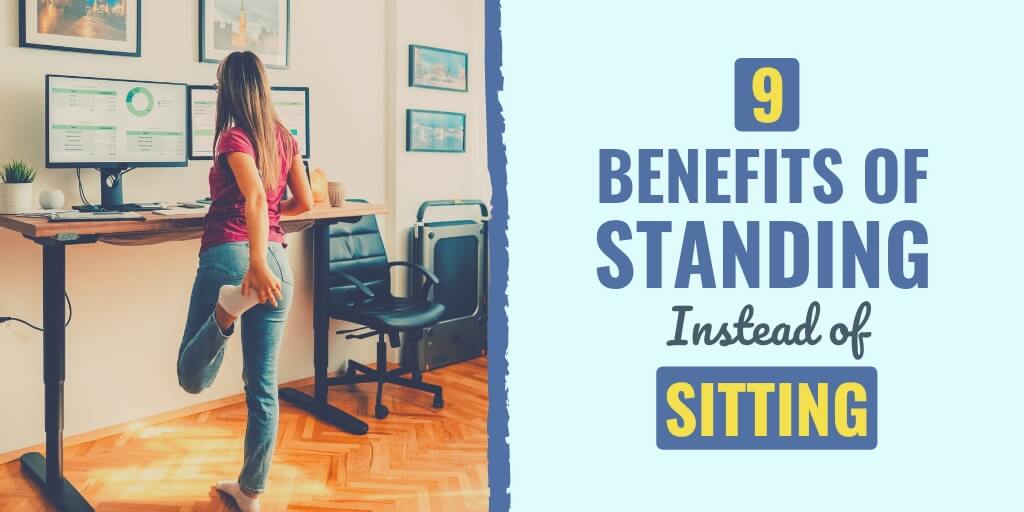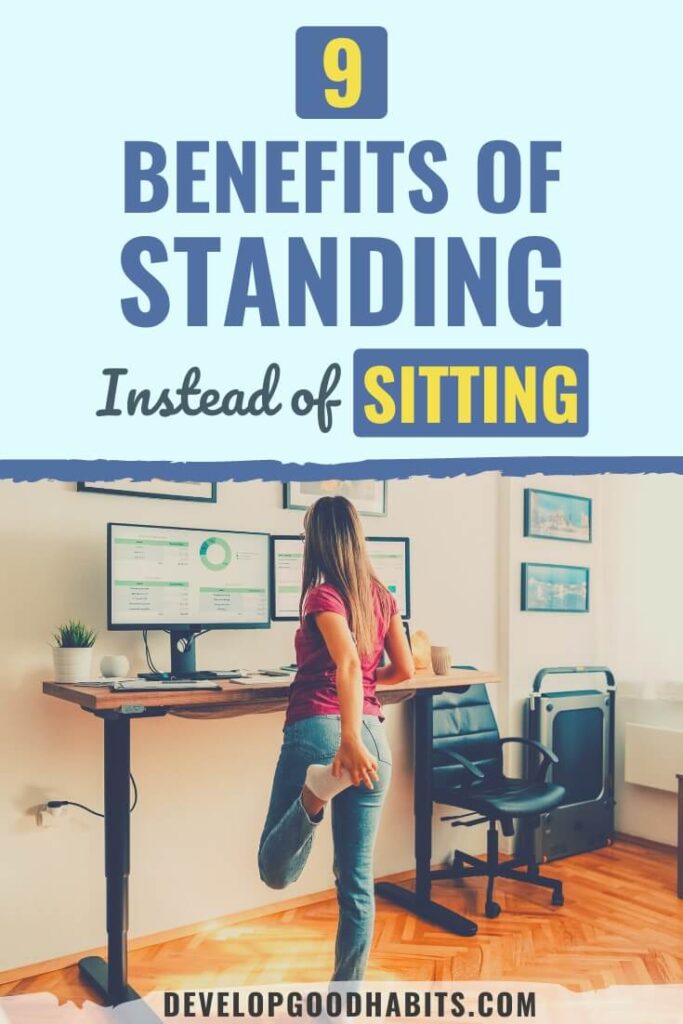There might be affiliate links on this page, which means we get a small commission of anything you buy. As an Amazon Associate we earn from qualifying purchases. Please do your own research before making any online purchase.
Modern people sit too much. Our bodies were not designed to be sitting all day long. In the standing vs sitting debate, this much is obvious.
Sitting all day in the same position puts you at some level of health risk. But how much better is standing vs sitting really?
Let's find out…
Let's take a moment to consider the health benefits of standing. We start by discovering the nine health benefits of standing vs sitting and what impact this can have on our bodies. (And if you'd like a simple tool that will help with standing more consistently, then I recommend checking out these anti-fatigue mats.)
Benefits of Standing
1. Standing reduces the risk of weight gain and obesity.
Your body better able to burn more calories when you are standing vs sitting. A sedentary lifestyle, where you are spend most of your time sitting, invariably leads to weight gain and obesity.
A recent study published by the Mayo Clinic reveals that standing for at least six hours throughout the day significantly decreases the probability of obesity in both men and women.
The study used three measures to assess over 7,000 adults: body mass index, body fat percentage, and waist circumference.
The researchers found that men who stood up for at least six hours per day had a 59% reduced likelihood of obesity. For women, standing for at least six hours a day was linked to 35% reduced chance of obesity.
2. Standing vs sitting lowers the risk of heart disease.
Choosing to stand rather than sit lowers blood sugar and cholesterol, and keeps weight off—all of which decreases your risk for heart disease.
Researchers in Australia found that standing helps increase your “good” HDL cholesterol and decrease your “bad” LDL cholesterol levels.
Trading standing for sitting for an extra two hours per day was associated with a 2% lower average fasting blood sugar level in both men and women, and an 11% lower average level of triglycerides.
Standing for the extra time was also shown to improve HDL cholesterol by 0.06 mmol/L and lower LDL cholesterol by 6%. In fact, every two hours that is spent sitting each day was associated with increased weight and waist size and increased levels of blood sugar and bad cholesterol.
Not surprisingly, time spent walking instead of sitting had a reverse effect. However, simply substituting two hours of standing for sitting improved blood sugar and cholesterol levels.
3. Standing helps lower the risk of type 2 diabetes and other metabolic diseases.
According to the American Diabetes Association, breaking up your time of prolonged sitting by standing up on a regular basis, or even just walking for five minutes, can reduce blood sugar levels by 34%, especially in postmenopausal women.
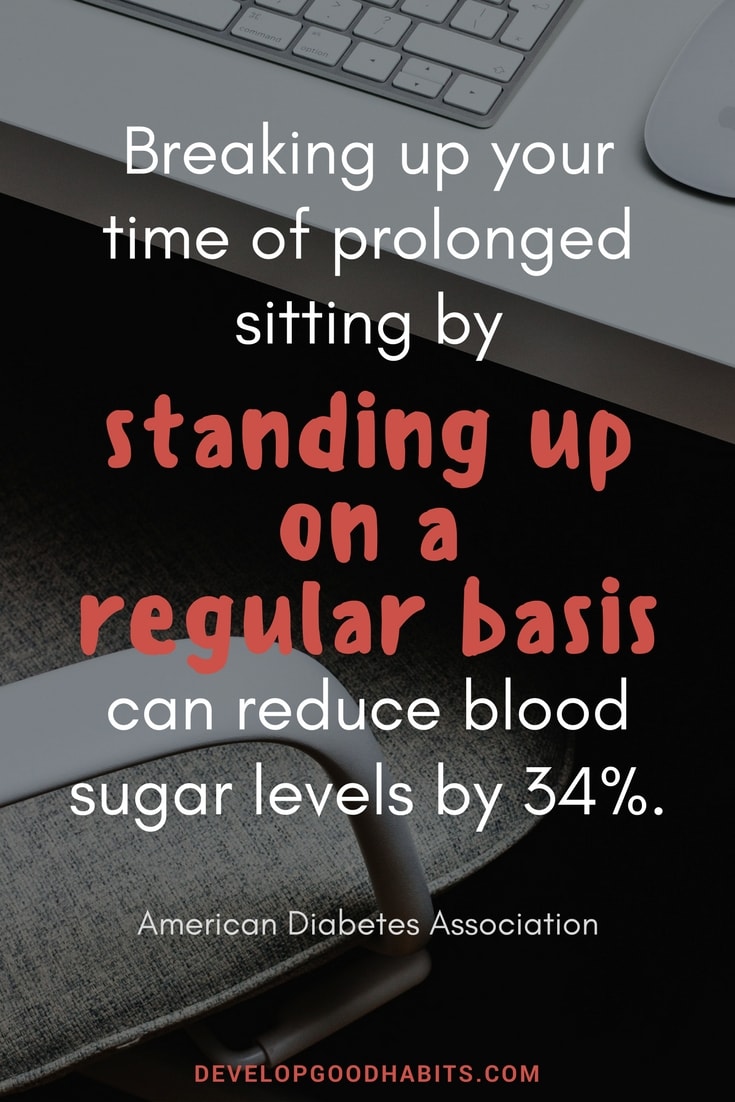
In this study, 22 overweight, dysglycemic, postmenopausal women either participated in prolonged, unbroken sitting for 7.5 hours, or prolonged sitting that was broken up with either standing or light-intensity walking.
For the second day of the study, all participants underwent the 7.5-hour prolonged sitting protocol.
Compared to only sitting, both standing and walking significantly reduced the average blood glucose levels and insulin levels in the women. The effects on glucose for the women standing and walking, and on insulin for those walking, continued into the following day.
This study helps show that breaking up prolonged sitting with short periods of standing or walking helps reduce postprandial glucose and insulin levels in women who are at a high risk of type 2 diabetes.
4. Standing lowers long-term mortality risk.
Research shows that not only can living a sedentary life lead to diabetes and heart disease, it can also lead to death.
One study even suggests that you can raise average life expectancy by two years by simply reducing your daily sitting time to three hours.
5. Standing helps reduce the risk of cancer.
According to the American Institute for Cancer Research, almost 50,000 cases of breast cancer and over 40,000 cases of colon cancer each year are caused by inactivity.
Prolonged sitting, even by people who exercise on a regular basis, also increases the risk for cancer. Standing up throughout the day gets your circulation moving and reduces inflammation and other markers that raise cancer risk.
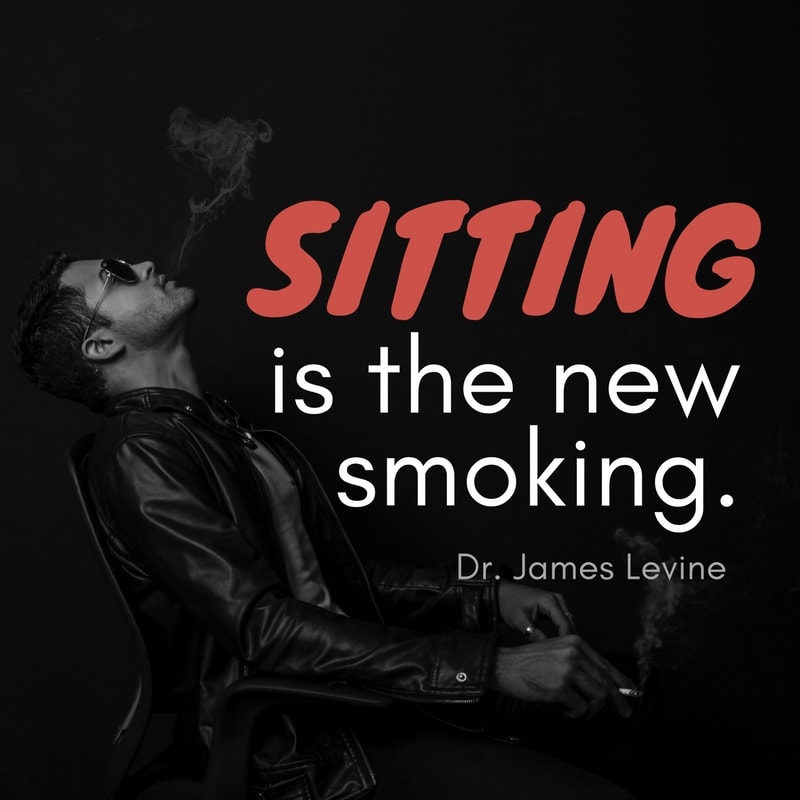
Prolonged sitting is considered to be one of the largest cancer risk factors. Engaging in short bouts of activity such as standing and walking about can help protect against many cancers.
6. Standing can help ease or reduce chronic back pain.
According to a Stanford University back pain study, workers who used sit-stand desks instead of regular desks while working were more likely to report a pain-free day.
During this study, 46 participants received a sit-stand workstation either at the beginning or the end of the three-month trial. At the end of each workday, participants completed a short survey.
Following weeks 1, 6, and 12, participants filled out comprehensive surveys. The surveys had a modified brief pain inventory and the Roland Morris Disability Questionnaire, which is designed to self-assess one's physical disability that is caused by low back pain.
This study found that participants who were given a sit-stand workstation reported having a significant reduction in both their current and worst lower back pain over the three-month period.
Another study also reports that transitioning from a seated to a standing position every 30 minutes during the workday can significantly reduce fatigue levels and lower back discomfort in overweight/obese office workers.
For this study, overweight/obese office workers went through two five-day experimental conditions. The participants performed their typical occupational tasks for eight hours each day in either a seated work posture, or alternating between standing and sitting every 30 minutes.
Self-administered questionnaires were then given to measure fatigue, musculoskeletal discomfort, and work productivity on the fifth day of each experimental condition.
Participants in this study reported having a significantly higher total fatigue score when they sat for the entire eight-hour day compared with when they alternated between sitting and standing.
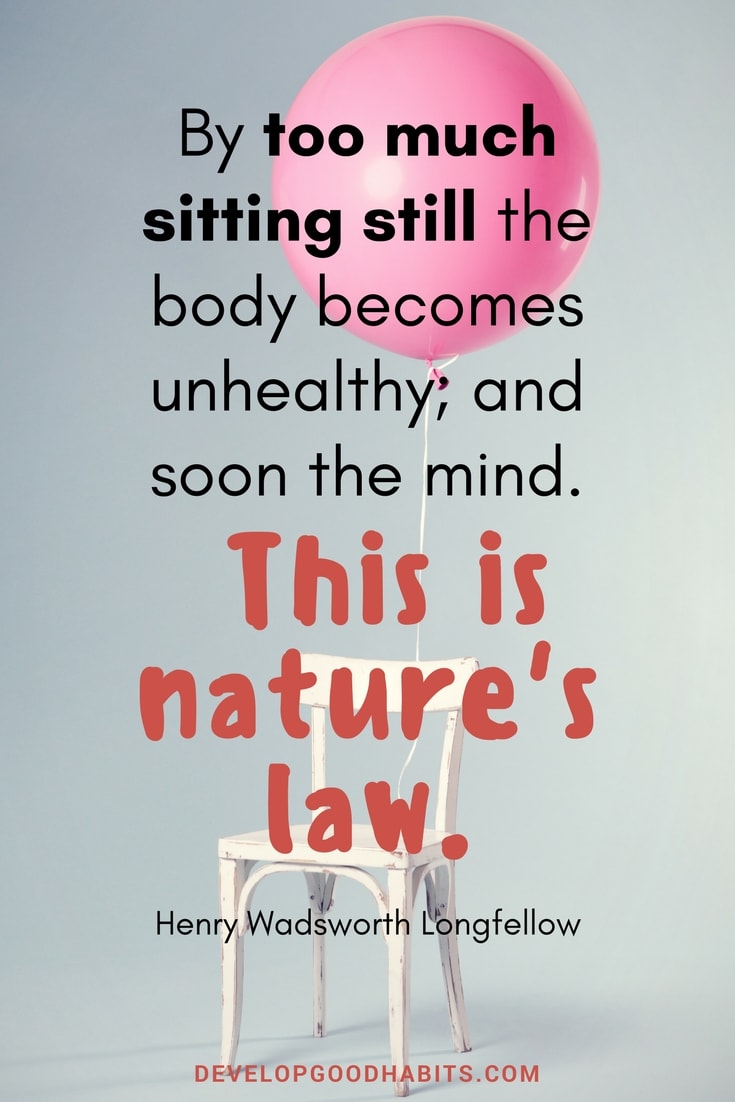
Lower back musculoskeletal pain was significantly reduced when participants alternated between sitting and standing as well.
Additionally, the overall productivity of the workers increased while they were able to sit and stand.
7. Standing helps increase energy levels and improve mood.
Standing while working improves collaboration and encourages creativity. In fact, workers who use standing desks report less stress and fatigue than those who don’t.
In a seven-week long study, 24 participants received sit-stand devices designed to fit their workstations, while others did not.
Using experience-sampling methods to monitor sitting behavior helped the researchers estimate change scores in sitting time, health risk factors, mood, and other office behaviors on the basis of the survey responses.
This project reduced the time that workers spent sitting by 224%, reduced upper back and neck pain by 54%, and improved people's moods. Additionally, once the device was removed, all of the observed improvements were negated within two weeks.
8. Standing while working boosts productivity.
In one study, call center agents who used a stand-capable desk over six months were found to be more productive than those who used regular desks.
A comparison analysis was completed using a group of people using stand-capable desks and a group of people who remained seated throughout the day.
The results showed that users of stand-capable desks were about 45% more productive each day compared to their seated colleagues.
Additionally, the productivity of the stand-capable desk users significantly increased over time, from about 23% in the first month to about 53% over the next six months.
If you want to learn more about increase your productivity while staying healthy, take a few minutes to watch the video below about the habits that will help you become more productive at work.
9. Standing while working helps tone muscles.
Standing while working helps strengthen your core muscles and leg, ankle, and foot muscles. It also helps improve your posture and balance.
Standing with good posture is a great way to strengthen and tone your body. To ensure you have correct posture, stand up straight and center your feet below your hips.
Tuck in your tailbone, push your shoulders back, and straighten your neck so you are holding your head up high. This will help tone your core muscles, and can even raise your metabolism.
With the one simple change of getting up throughout the day or doing as much of your work standing as possible, you can immensely benefit your health. Standing and walking throughout the day is an easy addition to your health regimen that won't cost you any time or money.
How to Easily Increase Your Daily Standing
The easy part is to say, “I need to stand more often”. The hard part is to actually go out and build the habits that will increase the amount of movement and standing you have in your life.
Change can be hard, but it can be done.
One way is to create a simple walking routine to build into your lifestyle. I describe this idea in this post: Two Minute Walking Habit.
Another way to increase your daily standing time VS daily sitting time is to get a desk that makes working while standing easy.
I suggest adjustable height desks to build that habit. These desks easily convert between standing and sitting. Making it easier to stand up and work for a few minutes before lowering the desk and returning to work as normal.
Also walking treadmills are also a great way to exercise without leaving your home and sacrificing work time. You can learn more by reading our best walking treadmills review,
Finally, if you'd like to reduce the fatigue that happens when standing, then be sure to check out our three recommendations for standing mats.
Final Thoughts on Standing VS Sitting
Ultimately, by opting to stand instead of sitting for extended periods, you'll have improved posture, increased energy levels, enhanced productivity, and reduced risk of certain health conditions.
Standing not only keeps your body active but also allow you to explore new ways of working, engaging with your surroundings, and even adding a touch of creativity to your daily routine.
Whether it's incorporating a standing desk, finding opportunities to stand and stretch throughout the day, or simply choosing to stand during phone calls, prioritize your well-being and invite more movement into your life.
Remember, it's the small shifts in your habits that can lead to significant transformations.
And if you're looking for more resources to improve your sedentary lifestyle, be sure to read these articles:
- Two-Minute Walking Habit (To Stop the Dangers of Sitting Too Long)
- The Truth About the Sedentary Lifestyle (Hint: It Might Kill You)
- 9 Best Walking Apps to Count Steps, Lose Weight & Map Your Walks
Finally, if you want to focus on a great HEALTH habit that increases your energy and helps with your weight goals, then take 30-seconds each morning to prepare this drink to feel energized throughout the day.

